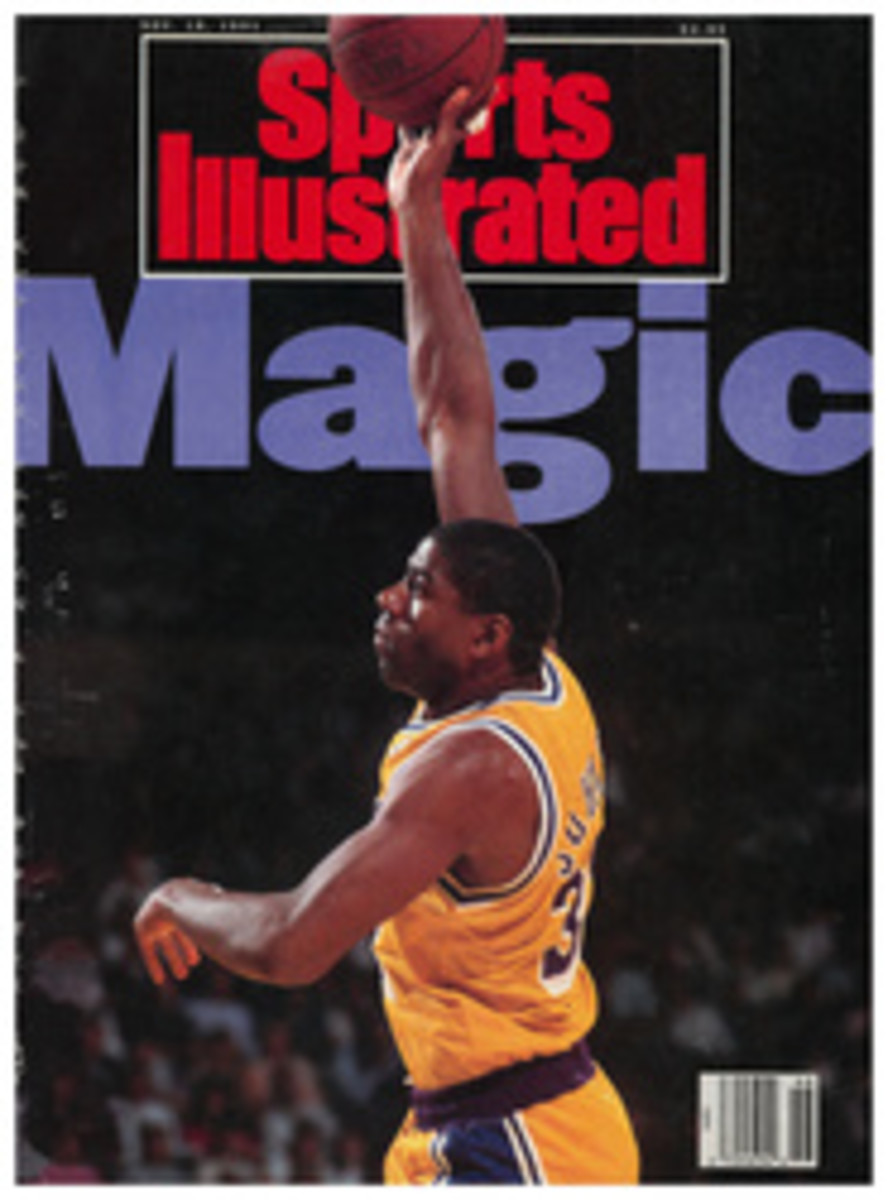
Pedaling in the Park
I didn't always want to be a Bicycle racer, careering around in a high-speed pack, risking life, limb and skin grafts while sporting tight shorts and shaved legs. But two things changed that. Several months before I took up cycling, I visited an orthopedic surgeon. I had spent years of running and racing on the roads, and my left leg's shinsplints had become chronic. I loved running, but I loved walking more.
The other thing was an incident that took place in New York City's Central Park early in the spring of 1990. While out pedaling around the park (noncompetitively, honest), I sensed someone coming up behind me. The person, sitting atop a painfully beautiful Pinarello racing bike and sporting a jersey that seemed to advertise all the products manufactured in Italy, swung out to pass me and nearly clipped my rear wheel.
I let him go for 100 yards before giving chase. He tried to pull away, but I caught him, then passed him. Ha!
Clearly, I had started something. After getting the green light from my orthopedist, I decided to try bicycle racing. I missed competing, but I was also curious. As a 35-minute 10K runner, how good a cyclist could I be?
Unfortunately, becoming a bicycle racer is nowhere near as easy as getting into a local road race. Races for beginners (public races) do exist. But the thought of riding in tight formation with 30 or 40 "racers" who were as unskilled and inexperienced as I was, was pretty terrifying.
Instead I joined the U.S. Cycling Federation and then my local club, the Century Road Club Association, so that experienced riders could teach me the ropes. The CRCA has 300 members and offers a full racing schedule. From March through November club races are held at seven o'clock on Saturday mornings in Central Park. To learn as much as I could about basic training I picked up a copy of Greg LeMond's Complete Book of Bicycling. From my road-racing experience, I was able to get into the training routine of endurance, speed and rest days. I also picked up a heart-rate monitor and began training with the New York Cycle Club. It is technically a touring club, but its "A" group tours at a healthy speed, often in a pace line or some other racing-style configuration.
During my two-month training period, the man I relied on most often for help was CRCA member Arnold Fraiman. Fraiman, 66, is a Category 3 racer who had also been a runner (one of his 43 marathons was a sub-three-hour at age 51), as well as a state supreme court judge. He agreed to help me be all that I could be up until race day.
"Bicycle racing is far more tactical than road racing," he explained. "There's a lot of strategy involved."
"O.K.," I said.
"The feeling of riding in a peloton [pack], caught up in the draft, creates an amazing, exhilarating feeling. Nothing quite like it."
"Fine," I said. "But is it dangerous?"
"Oh, it can be," he said matter-of-factly. "If you race long enough, you will crash—that's a given. It's best to try and stay toward the front of the peloton. If you're at the back, a lot can happen in front of you."
For the next half hour in his living room, he verbally took me over the six-mile Central Park course that we both knew well. He told me how and where I should shift, brake, move to the front of the pack, get on the inside, get to the outside, and what I could expect during the mad final sprint.
"You really only have to remember three things," he said, smiling. "Stay with the pack, stay with the pack and stay with the pack. If you lose them, you won't be able to draft, and you'll get dropped. Then you're finished."
On the big day I got up at 5:20 a.m. and was at the sign-in table by 6:20. It was perfect racing weather—clear skies, low humidity, a temperature of 67°. I paid my fee and learned that the A group would go out first and ride five laps for a total of 30 miles, followed by the B1's and B2's (four laps each, 24 miles) and then myself and the C's (three laps, 18 miles).
I stretched for a bit and checked out the competition. After a warmup ride I headed toward the starting line where the other racers were congregating. Fraiman was there chatting with CRCA membership director Jim Boyd, also a C rider. Boyd knew what he was doing, Fraiman said. I considered this information very valuable—when in doubt, I would do as Boyd did.
Fraiman, who wasn't racing, disappeared as the A group, about 25 riders in all, was called to the line. There was a countdown before the A's took off, and they were immediately replaced by the B1 group, which took off a few seconds later.
The B2's, all six of them, then moved up to the line, but they did not take off. After some discussion, the starter announced that the sparse B2 group "looks like a few guys out for a Sunday ride. B2's will race the C's."
"Four laps, four laps, four laps...," the few, but loud and well-positioned, B2's began chanting.
"The race will be four laps," the starter announced.
Faster than I could say, "Excuse me, but I really don't think this is fair, after all...," the starter counted us down. Along with 30 or so other riders I then clicked into my pedals, and we, too, were off.
Once under way, I forgot all the intricate strategies that Fraiman and I had discussed. Instead, I was reduced to the old just-do-what-the-guy-in-front-of-you-is-doing approach. The first lap went quickly, about 15 minutes (my average speed was roughly 25 miles per hour). Fraiman was right. Cruising with the peloton was exhilarating and definitely made you feel as if you were floating.
As I passed Fraiman at the start/finish line from the middle of the peloton, I flashed an upturned thumb. I felt good and not at all winded, although my mouth was starting to feel kind of dry. I had not been dropped. Better still, I hadn't fallen and been mashed between someone's gears.
Halfway through the second lap I pulled alongside Boyd. I took it as a sign that I must be doing something right, although I was getting just a bit tired and my mouth was starting to feel like a sawdust-filled long jump pit.
After finishing the third lap I was not only undropped by the pack but also in fifth place, precisely where Fraiman said a winner wanted to be. Suddenly a tremor of invincibility rippled through my body. Obviously Fraiman had underestimated the ability of the Kid. I could win this thing, PANIC IN CENTRAL PARK and other nifty New York Post-ian headlines telling of my sensational victory flashed across my mind. Yes, I thought to myself. Yes.
As we whizzed past East 90th Street, a little more than five miles from the finish line, I heard a couple of riders arguing about who was going to take the lead. No problem, dudes, I thought. I unshifted and sprinted ahead. Miraculously, stupefyingly, I was in the lead. I felt an intense rush as I put the peloton behind me.
Just as I began to climb the course's largest hill at the north end of the park, one of the dudes passed me, then another and another. By the time I reached the top of the hill, it felt like my blood had turned to vinegar. My mouth felt as dry as Death Valley, and my tongue felt as big as the Empire State Building. What hurt the most, though, was discovering I was now in second-to-last place. I would have cried, but I couldn't. I had no moisture to spare.
I rested as I coasted down the other side of the hill and began reciting a please-don't-let-me-be-dropped mantra over and over and over. Somehow it worked, probably because the other guys were tired, too. I was suddenly right back beside Boyd in the middle of the pack.
With about a half mile to go, Boyd leaned toward me and said, "This is where things get hairy." I knew he meant the riders would soon be getting into position for the final sprint. Hold the presses! The Post might have its headline yet. (I only hoped it wouldn't be along the lines Of CYCLIST COMBUSTS.)
Coming into the final stretch I heard a guy in front of me laughing and talking to a guy on his left. Figuring that if he had that much oxygen to spare he must be feeling better than I did, I sucked onto his back wheel like a remora. A few seconds later he shut up and made his move, cutting around the right side of the pack with me in his wake.
I disconnected myself from him with 100 yards to go when one rider and then another hit the pavement in front of me. I swerved around them to the right, got out of the saddle and sprinted maniacally uphill to the finish. As I crossed the line I thought my head and heart would explode simultaneously.
Coasting down the hill, I counted 11 riders in front of me, which I assumed included the six B2's. I circled back and found Fraiman, who asked me how I did. "Great," I said, breathlessly telling him about the two guys arguing and how I decided to go out in front and how I was leading with only five miles to go and I almost won and....
"Yeah," he said with a smile. "I'll bet those guys were glad you came along."
I'm still not exactly sure what he meant by that remark. I don't know much about bicycle racing, but as far as I can tell, you learn about 50% of everything you'll ever know after finishing the first lap, and maybe 80% by the time the race is over. I think Fraiman's comment had something to do with that remaining 20%, which just might take a few more than four laps to master.
ILLUSTRATION
JOSEPH SALINA
I let the hotshot pass me and go for 100 yards before giving chase.
ILLUSTRATION
JOSEPH SALINA
After the third lap I began to envision a headline-making victory.
Peter Sikowitz is a free-lance writer who lives in New York City.

